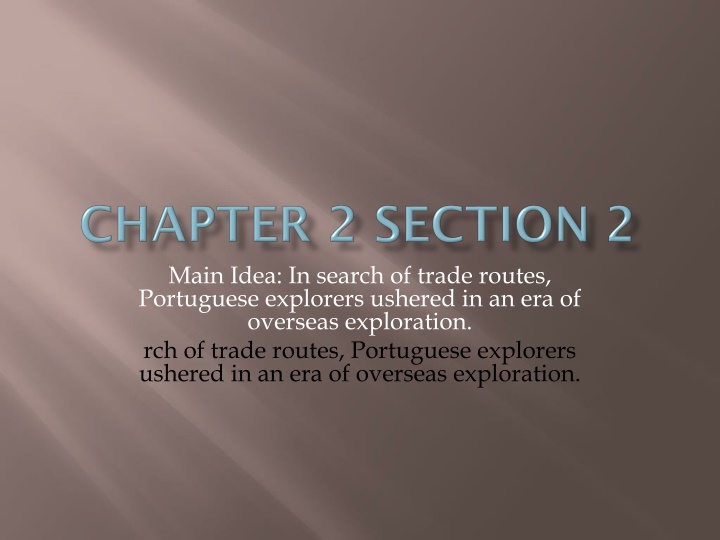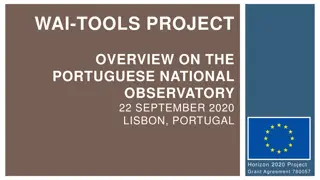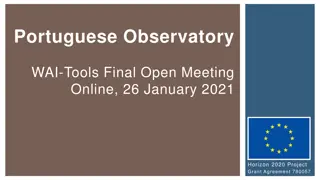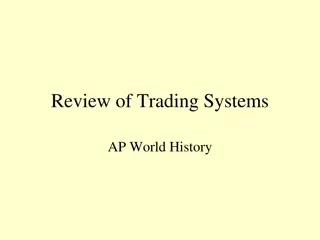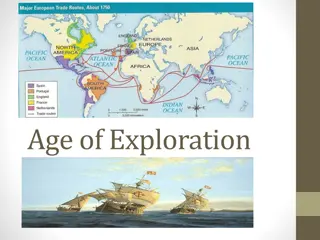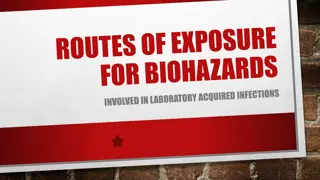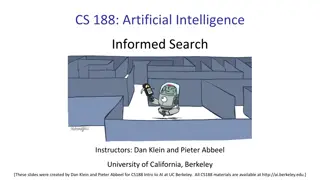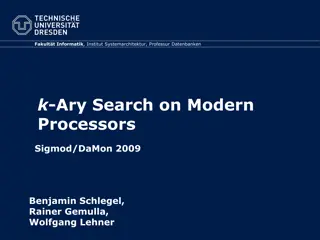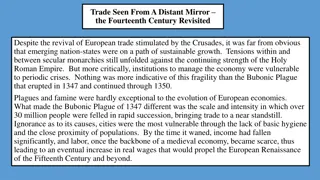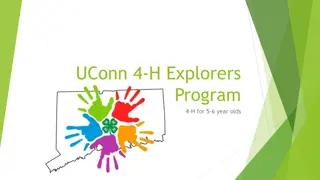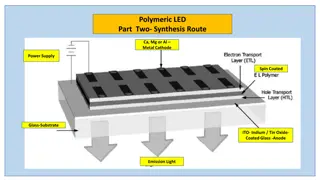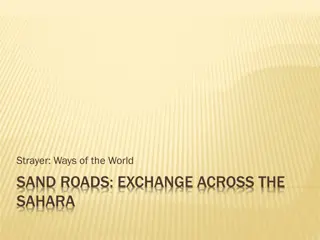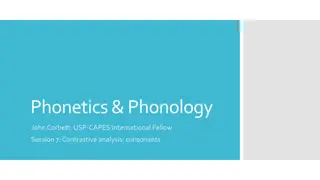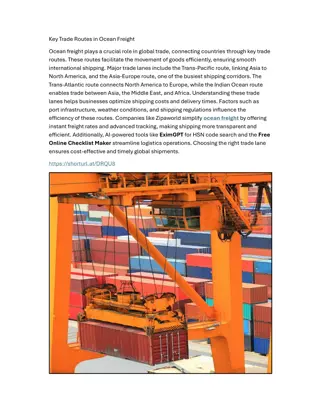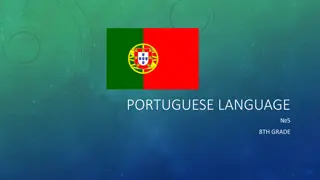Portuguese Explorers' Search for New Trade Routes
Portuguese explorers led the way in early exploration, seeking new trade routes to China, India, and West Africa. Through expeditions, such as Vasco da Gama's journey to India, they expanded trade networks and discovered new lands, like the Cape of Good Hope. The exploration efforts also led to unintended consequences such as the buying of slaves in West Africa. Queen Isabella of Spain sponsored Christopher Columbus's voyages, where he thought he had reached Asia but actually landed in the Americas, marking a significant moment in history.
Download Presentation

Please find below an Image/Link to download the presentation.
The content on the website is provided AS IS for your information and personal use only. It may not be sold, licensed, or shared on other websites without obtaining consent from the author.If you encounter any issues during the download, it is possible that the publisher has removed the file from their server.
You are allowed to download the files provided on this website for personal or commercial use, subject to the condition that they are used lawfully. All files are the property of their respective owners.
The content on the website is provided AS IS for your information and personal use only. It may not be sold, licensed, or shared on other websites without obtaining consent from the author.
E N D
Presentation Transcript
Main Idea: In search of trade routes, Portuguese explorers ushered in an era of overseas exploration. rch of trade routes, Portuguese explorers ushered in an era of overseas exploration.
ref_atlas Seeking New Trade Routes The Portuguese were the leaders of early exploration. They hoped to find a new route to China and India. They also helped to find a more direct way to get West African gold. Prince Henry of Portugal (also called Henry the Navigator) set up a center for exploration so that scientists could share their knowledge with shipbuilders and sailors. pres_gallery history_online (pages 43 45)
ref_atlas Seeking New Trade Routes (cont.) pres_gallery Ships sailed south along the coast of West Africa (also called the Gold Coast) where they traded for gold and ivory and began buying slaves in the mid-1400s. In 1487 Bartholomeu Dias explored the southernmost part of Africa. This became known as the Cape of Good Hope. The king of Portugal hoped the passage around the tip of Africa would lead to a new route to India. history_online (pages 43 45)
ref_atlas Seeking New Trade Routes (cont.) pres_gallery In 1497, Vasco da Gama sailed around the Cape of Good Hope. He visited East African cities and reached India in 1498. history_online (pages 43 45)
ref_atlas Seeking New Trade Routes (cont.) pres_gallery history_online Why do you think the Portuguese began buying slaves from West Africa? Possible answer: They traded goods for slaves so they could help make Portugal wealthy. (pages 43 45)
ref_atlas Columbus Crosses the Atlantic (cont.) pres_gallery Queen Isabella of Spain sponsored Columbus on his first voyage in August 1492. He set out with three ships to find a route to Asia. On October 12, 1492, he spotted land, named it San Salvador, and claimed it for Spain. He did not know that he had reached the Americas. He was convinced that he had reached the East Indies. history_online (pages 45 49)
ref_atlas Columbus Crosses the Atlantic (cont.) pres_gallery Columbus made three additional voyages in 1493, 1498, and 1502. He explored the Caribbean islands of Hispaniola, Cuba, and Jamaica and sailed along the coasts of Central America and northern South America. He claimed these lands for Spain. history_online (pages 45 49)
ref_atlas Columbus Crosses the Atlantic (cont.) pres_gallery The Treaty of Tordesillas was signed by Spain and Portugal to clarify the line of demarcation between their lands in the Americas. The treaty moved the line farther west so that Portugal would not be at a disadvantage. Spain was to have control of all the lands to the west of the line, and Portugal was to have control of all the lands to the east of the line. history_online (pages 45 49)
ref_atlas Columbus Crosses the Atlantic (cont.) pres_gallery Amerigo Vespucci mapped South America s coastline in 1499. He concluded South America was a continent, but not part of Asia. European geographers called the continent America, in honor of Amerigo Vespucci. Vasco N ez de Balboa claimed the Pacific and adjoining lands for Spain. history_online (pages 45 49)
ref_atlas Columbus Crosses the Atlantic (cont.) pres_gallery Ferdinand Magellan, sailing from Spain in 1519, found a passage to the Pacific, the Strait of Magellan. Magellan sailed around South America and toward Spain. Magellan was killed in an island battle along the way, but a small number of his crew made it all the way to Spain. The crew became the first to circumnavigate the world. history_online (pages 45 49)
ref_atlas Columbus Crosses the Atlantic (cont.) pres_gallery history_online Why did European explorers attempt these difficult journeys? Possible answer: European explorers attempted these journeys for adventure, wealth and fame, dedication to a goal, and so on. (pages 45 49)
ref_atlas Checking for Understanding Define Match the terms on the right with their definitions on the left. pres_gallery history_online __ 1. a narrow passageway connecting two larger bodies of water __ 2. to sail around the world __ 3. an imaginary line running down the middle of the Atlantic Ocean from the North Pole to the South Pole dividing the Americas between Spain and Portugal A. line of demarcation B. strait C. circumnavigate B C A
ref_atlas Checking for Understanding pres_gallery Reviewing Facts Who were the first Europeans to reach the Americas and when did they arrive? history_online The first Europeans to reach the Americas were the Vikings (c. 1000), Christopher Columbus (1492), and Vasco N ez de Balboa (1513).
ref_atlas Reviewing Themes pres_gallery Geography and History What nations signed the Treaty of Tordesillas? What was the purpose of the line of demarcation? How did the treaty affect European exploration of the Americas? history_online Spain and Portugal signed the Treaty of Tordesillas. The line of demarcation determined control of lands by Spain (all lands west of the line) and Portugal (all lands east of the line).
ref_atlas Critical Thinking pres_gallery Making Inferences For years, many history books have claimed that Columbus discovered America. Why do you think Native Americans might disagree with the choice of the word discovered in this statement? What might be a better word? history_online Native Americans lived in the Americas before Columbus arrived. Better words may include: claimed, encountered, came upon, or reached.
